How to make homemade tropical fruit cups with fresh fruit and a pinch of sugar. Whip up this easy, nutritious snack in 30 minutes or less!
There's nothing quite like a bowl of fresh fruit, especially in the winter months when things are a bit bleaker than the norm. This tropical fruit salad is especially uplifting.
A homemade fruit cup filled with tropical fruit is perfect for a sweet snack; it's also the perfect appetizer or dessert for a baby shower, wedding shower, birthday parties, and even brunch.
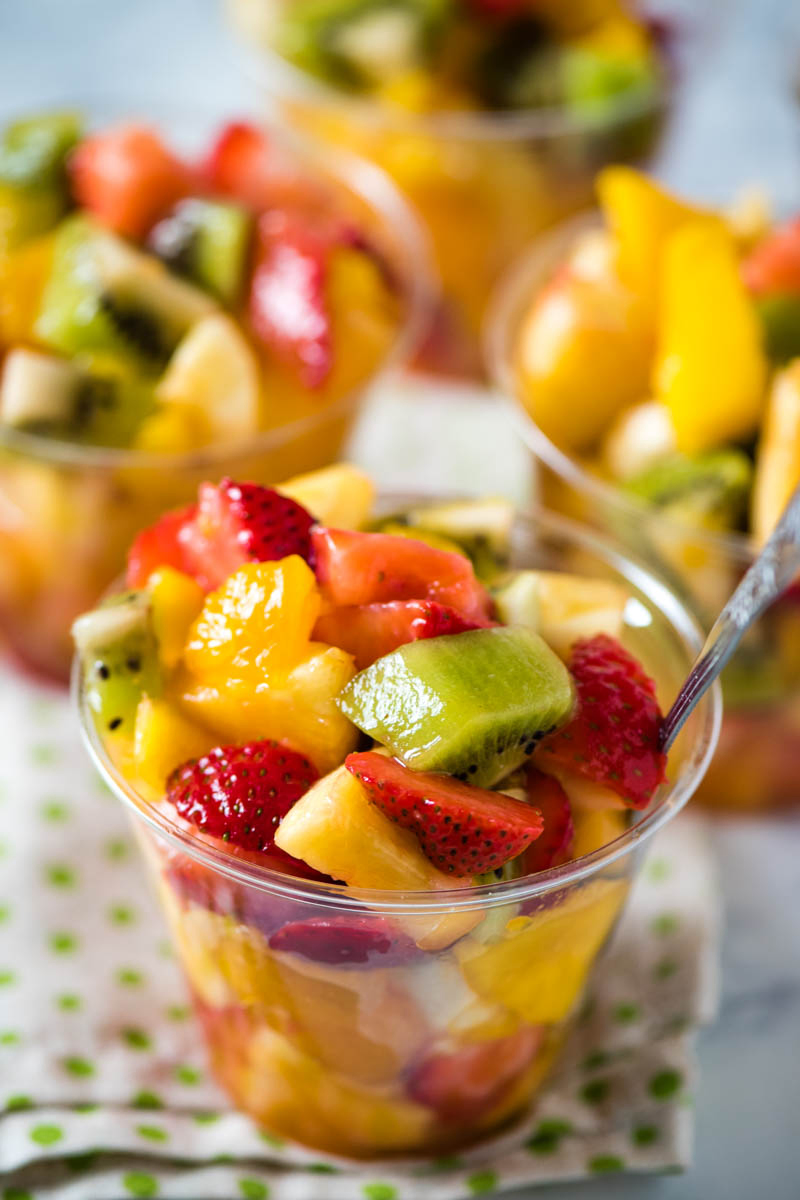
Mini tropical fruit salads can be as colorful as you choose to make them, and we'll go over some different ideas for fresh fruit as you read further along.
You can eat it plain without any garnish; or you can top it off with a swirl or dollop of whipped cream.

My “berry monster” of a youngest child loves mixed berry fruit cups too. We just love fruit, period.
Why I Think You'll Love This Homemade Fruit Cup Recipe
- They are filled with fresh fruit and nothing else, except for a pinch of sugar to bring out the juices– NO “natural flavors” and NO high fructose corn syrup. These healthy fruit cups are jam-packed with essential nutrients that our bodies use daily.
- Homemade fruit cups are quick to mix up and easy to make. At most, this recipe takes 30 minutes to prepare. It's easy to pack, and you can make it with disposable plastic cups or reusable plastic cups.
- You can easily make large batches ahead of time for an easy snack that the kids will love.
- These refreshing tropical fruit salad cups are both beautiful and colorful, and they taste even better than they look!
Ingredients & Substitutions Notes
I use all fresh fruit, except for canned mandarin oranges. Here are a few tips on what to look for when buying fresh fruit…
- Pineapple – You can use fresh or canned, preferably with no added sugar. When buying fresh pineapples, look for a healthy green top, with a vibrant greenish-yellow interior. It should be firm with a little give when squeezed, and a ripe pineapple will give off a sweet smell at the base. Bitter odors are a sign that it may not be fully ripe.
- Strawberries – You'll want fresh strawberries for this fruit cup recipe. Look large red, firm berries free of rot or mold and with healthy green tops.. Avoid any soft spots.
- Mangoes – Again, you'll want fresh mangoes for this recipe. A ripe mango will feel heavy for its size, and it will be firm with a little give when pressed into. Most importantly, it should smell strongly aromatic and fruity, especially near the stem end.
- Mandarin oranges, drained well – For this recipe, I recommend using canned mandarin oranges, preferably with no sugar added, but you can use fresh mandarin oranges if necessary and if you can find them. Mandarin oranges are smaller, sweeter and less acidic than normal oranges, so they pair well with fruit salad. A fresh mandarin orange should have a deep orange color and citrusy, sweet smell. Avoid green patches, soft spots, blemishes, rot, mold, etc.
- Kiwi – Plump, large and slightly soft fresh kiwis with a fragrant, citrusy smell are best. Avoid kiwis with a pungent, sweet smell, as this is often an indicator of overripeness. As with all fruit, avoid rot, mold, soft spots, etc.
- Bananas – Look for bright yellow bananas with only a slight bit of green around the ends. If you will be making this fruit cup recipe right away, a little bit of brown speckling is okay, but they won't keep long.
- Fresh lime juice – You want a large, round fresh lime with no marks, blemishes, or soft spots. If you don't have any fresh limes, bottled lime juice will work just fine. You can also substitute 1:1 with fresh or bottled lemon juice.
- Sugar (optional) – I like to add about a tablespoon of sugar and stir it into the fruit, in order to create a bit of real fruit juice in the fruit cups. If you prefer a natural sweetener, feel free to substitute 1:1 with honey.
Remember, all of the ingredient amounts you’ll need are in the printable recipe card below.
How to Make Homemade Tropical Fruit Cups
Before getting started, I like to soak any type of fresh fruit or vegetable in a mixture of about 1 tablespoon of vinegar to every gallon of water for around 10 minutes, then rinse and drain with a kitchen colander strainer before preparing or eating.
- Core, peel, and chop the pineapple into chunks on a large cutting board; then add them to a large mixing bowl. A pineapple corer makes this step super easy, but you can just use a large chef's knife if you don't have one!
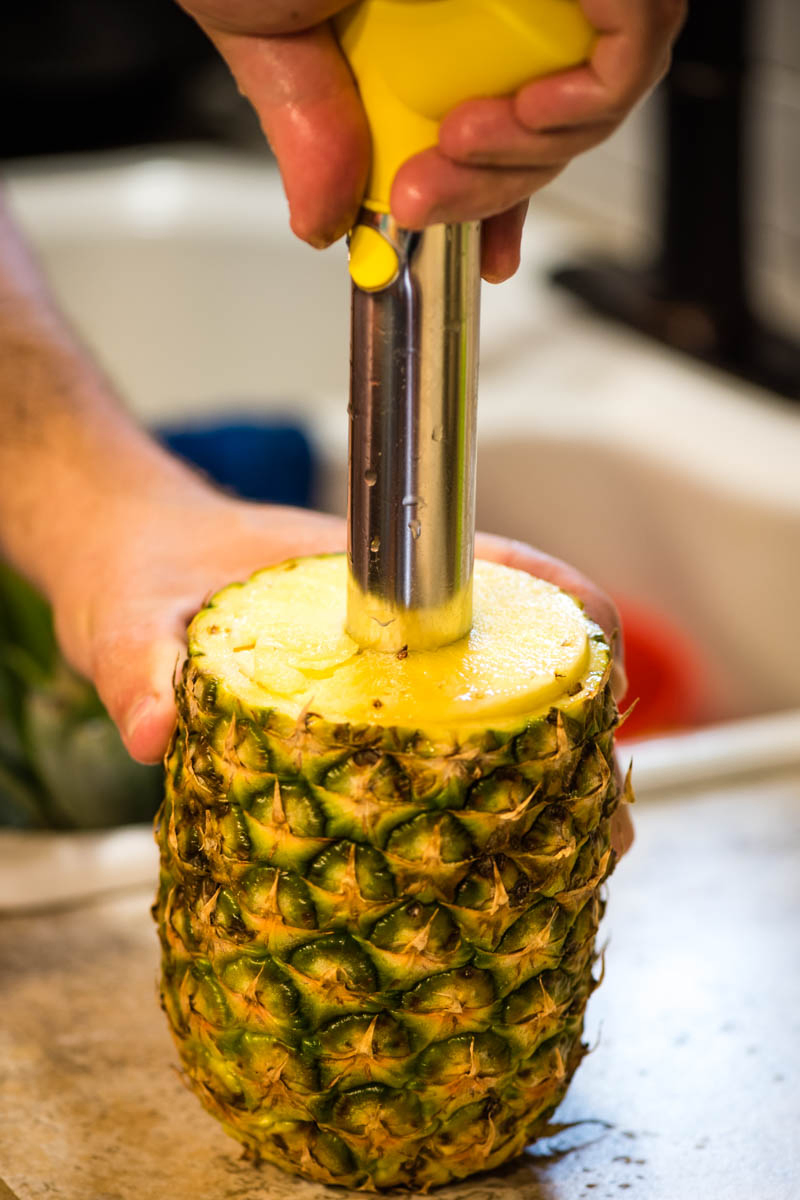
- With a paring knife, stem and then slice the strawberries into the bowl.
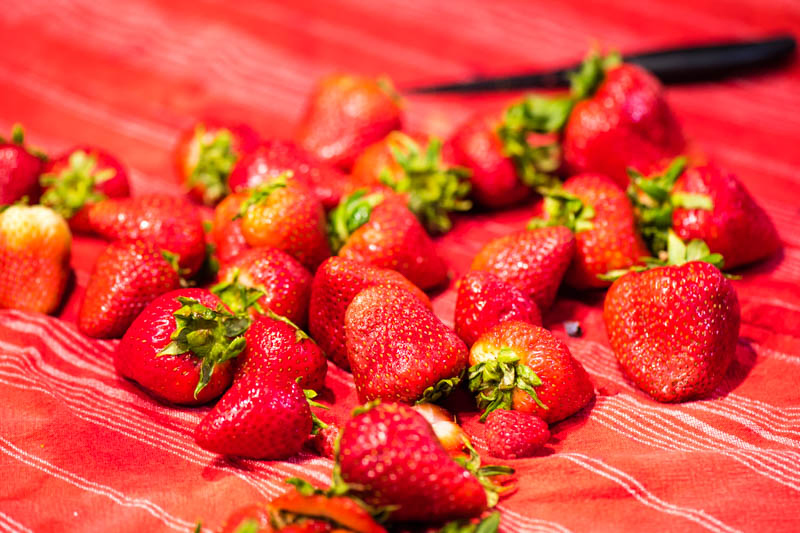
- Peel and slice the mangoes into the mixing bowl, as well. Although I don't have one, I've always wanted a mango slicer for this step!
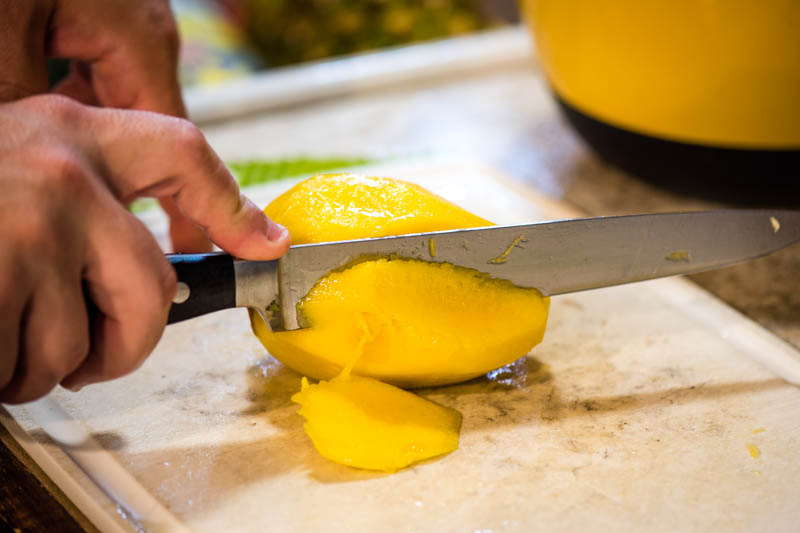
- Next drain the mandarin oranges, and add them to the mixture. If you're using fresh oranges, just peel and toss em' in.
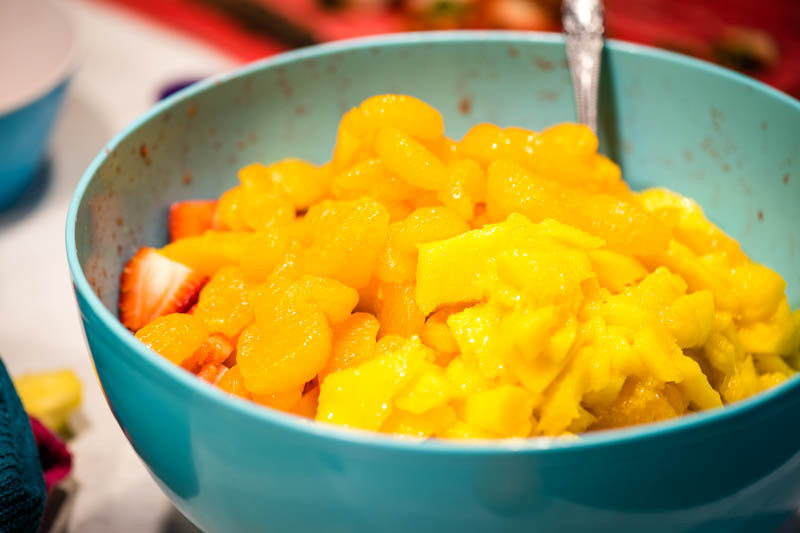
- Peel and chop the kiwi into chunks; then add the kiwi chunks to the fruit mixture.

- Peel and slice the bananas into chunks, and add them to the mixing bowl.

- Squeeze fresh lime juice into the fruit mixture. It's not needed, but a lemon lime squeezer can make this step a bit easier!
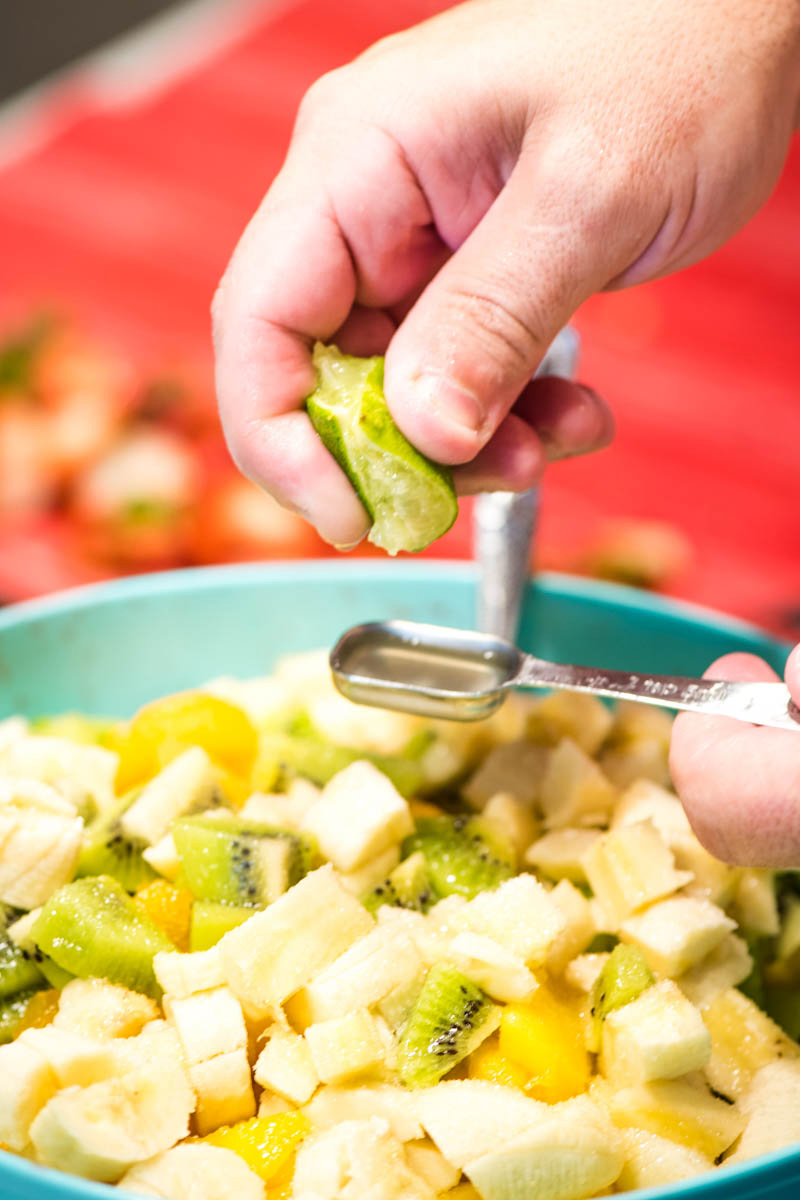
- If desired, add a tablespoon of sugar. Again, you can also use honey for this step if preferred.

- Give everything a good stir, mixing all the fruit together until you have a hodge podge of colorful fresh fruit all combined together.
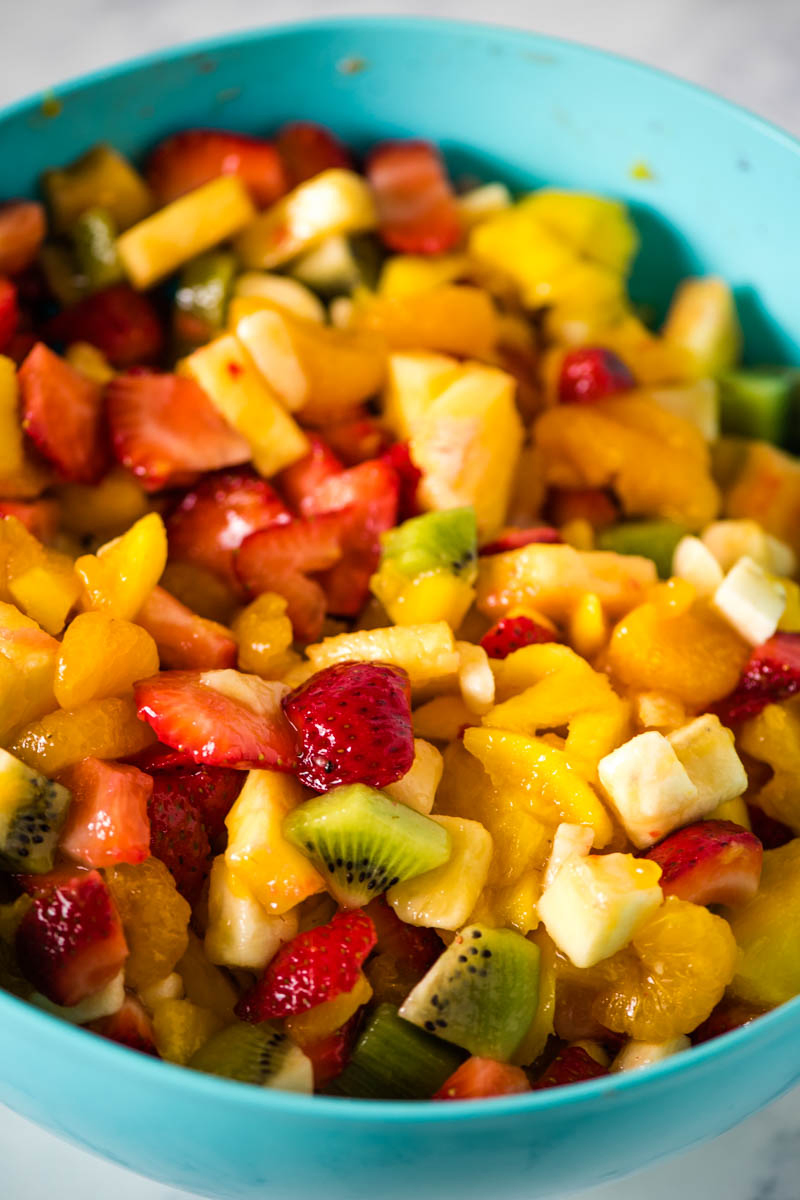
- Finally, add the fresh fruit mixture to plastic cups or containers. Top them off with a dollop of homemade whipped cream and serve. These homemade tropical fruit cups have got to be the prettiest, most refreshing treat I know of!

Alternate Tropical Fruit Cup Ideas
If you're looking to switch things up, here are some ideas for alternate tropical fruit you can use in your fruit cups…
- Grapes
- Star fruit
- Passion fruit
- Dragon fruit
- Papaya
- Pomegranate
- Watermelon
- Cantaloupe
If you're looking for a recipe with non-tropical fruit, these mixed berry fruit cups may be the ticket. Strawberries, blueberries, blackberries, red raspberries and more….They're all there!
Some of these fruits can be hard to find depending on your location and even the present season. What it really boils down to is finding what's available in your area and working with what you have; check your local grocery stores and farms to see what's available.
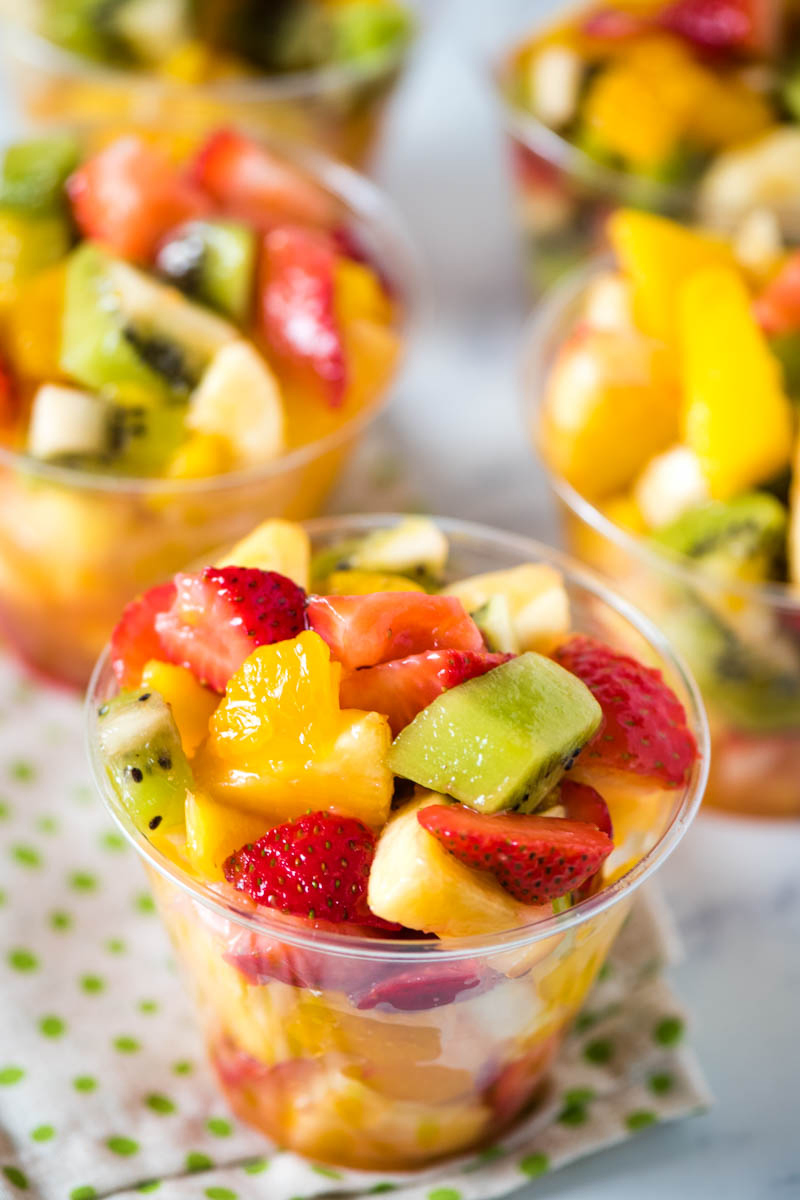
Expert Tips and Recipe FAQ's
My expert tip would be to eat homemade fruit salad cups as fresh as possible. Once cut and sliced, fresh fruit does not last long!
How to Keep Fruit Salad Cups From Getting Soggy
It is inevitable that fruit salad will go soggy eventually. However, there are a few other factors that can affect how quickly your tropical fruit cups go soggy and/or brown.
- It is especially important that you use the lime or lemon juice recommended in the recipe. The acidity is what ultimately preserves the fruit and keeps it from going brown and soggy. Alternatively, some people prefer to use ascorbic acid instead.
- If you can't eat fruit salad right away, consider leaving the sugar out until it is actually time to eat. The sugar will slowly pull juices out of the fruit, leaving it dehydrated and more prone to sogginess.
- I think the most overlooked factor is the sharpness of the knife. Clean cuts are essential, as a dull knife can bruise and tear at the fruit, creating unneeded opportunity for rot. Not to mention, you have a much higher chance of accidentally cutting yourself with a dull knife. So use a knife sharpener!
As stated above, it is always best to eat fruit salad as fresh as possible, but these mini tropical fruit salads should keep in the refrigerator for a couple days, provided that the mixture is stored properly in an airtight container. After this, the fruit becomes soggy, and it gains an “off” color that may not be all that palatable.
Yes, the fruit mixture can be frozen for up to 8 weeks, so long as it is stored in an airtight container; but it will somewhat change the texture of the fruit, leaving it mushy once thawed, so it is best to eat as a frozen treat. As mentioned above, leaving out the sugar until it is time to eat helps.
That being said, my boys actually prefer and enjoy the refreshening taste of frozen fruit salad when summer is at its peak.
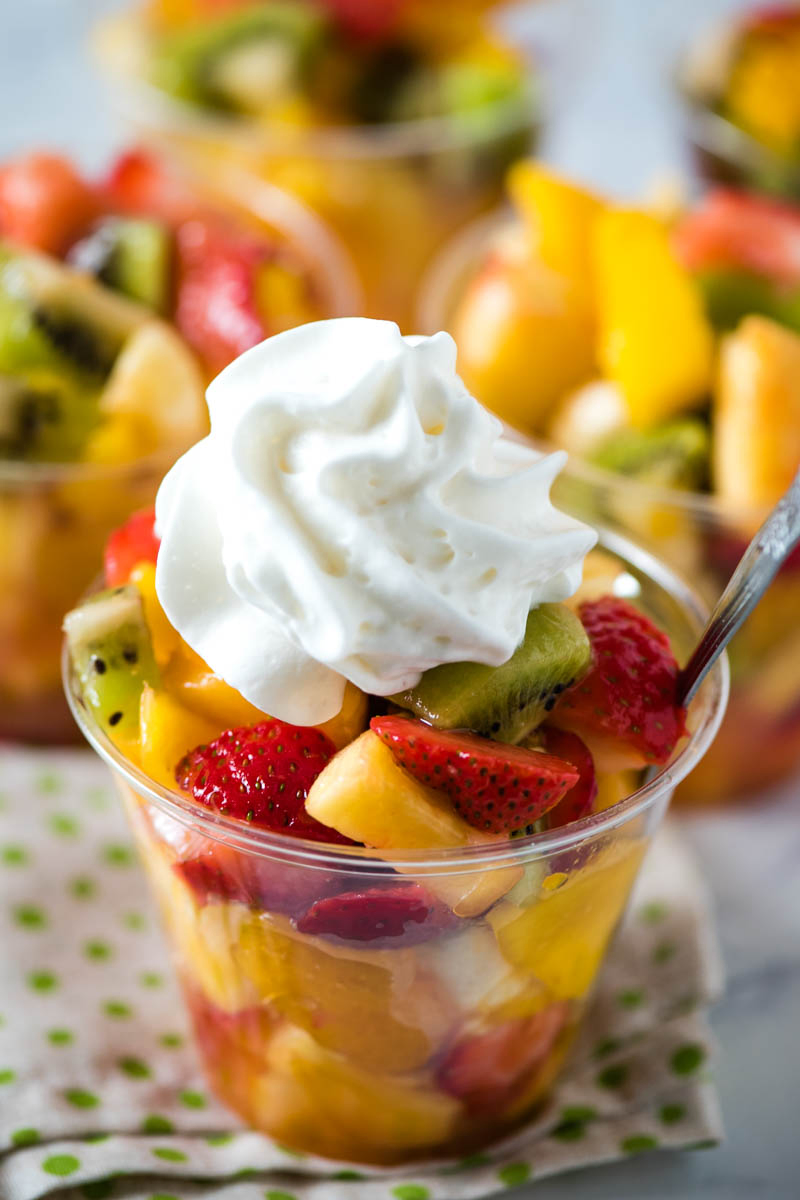
More Delicious Way to Eat Fruit
- How to make an easy Mandarin orange Jello salad with cottage cheese, pineapple and Cool Whip– Fluff dessert recipe that's perfect for holiday dinners or even large family get-togethers!
- Whip up a mixed berry salad with a simple honey dressing for a great spring or summer side dish the whole family will love!
- If you like strawberry Jello, you'll love this strawberry cottage cheese Jello salad. And if you don't care for the cottage cheese, you can make my strawberry fluff recipe instead.
- Rather than a cake, my oldest son asks for this fruit pizza with puff pastry for his birthday almost every year. Not only is it loaded with fresh fruit and yummy cream cheese spread, but it's a bit hit in my family.
- These fruit pizza bites with puffy pastry cups are basically a bite-sized fruit pizza. They're a little bit easier to eat, and they make a great appetizer!
- This quick and easy ambrosia fruit salad is a must-have recipe for any fruit lover! Cool Whip, sour cream, fresh fruit, mini marshmallows….classic southern side dish!
- Just want something simple? Check out these easy fruit kabobs with a Philly cream cheese chunky fruit dip. Fruit on a stick….It doesn't get much easier than that!
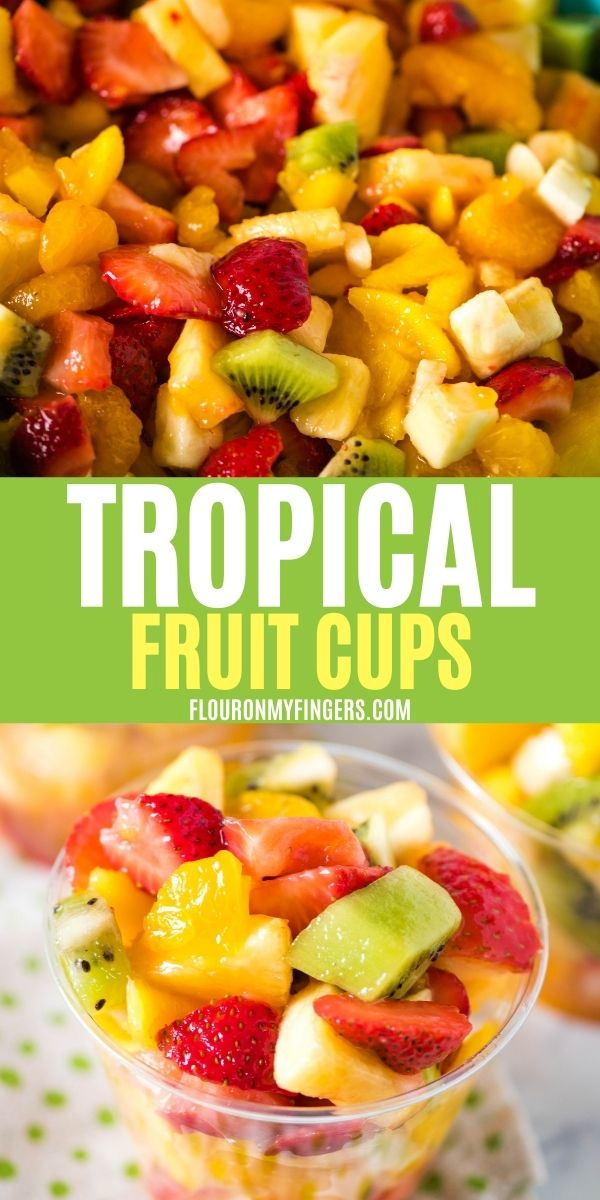
If you try this recipe, why not leave a star rating in the recipe card right below and/or a review in the comment section further down the page? I always appreciate your feedback. You can also follow me on Pinterest, Facebook, YouTube, and Instagram. And subscribe to my email list too!

Homemade Tropical Fruit Cups
Equipment
- Kitchen Colander Strainer optional
- Pineapple Corer optional
- Mango Slicer optional
- Lemon Lime Squeezer optional
- Knife Sharpener optional
Ingredients
- 1 pineapple
- 2 quarts strawberries
- 2 mangoes
- 30 ounces mandarin oranges drained
- 5 kiwi
- 3 bananas
- 1 teaspoon fresh lime juice
- 1 tablespoon sugar optional
Instructions
- Wash, then drain excess water off all the fruit before getting started with prep.
- Core, peel, and chop the pineapple into chunks; then add them to a large mixing bowl.
- Stem, then slice the strawberries into the bowl.
- Peel and slice the mangoes into the mixing bowl.
- Next drain the mandarin oranges and add them to the fruit mixture.
- Peel and chop the kiwi into chunks, and add to the fruit mixture.
- Peel and slice the bananas into chunks, and add them to the fruit mixture.
- Squeeze fresh lime juice into the fruit mixture.
- If desired, add a tablespoon of sugar.
- Give everything a good stir, mixing all the fruit together until you have a hodge podge of colorful fresh fruit all combined together.
- Finally, add the fresh fruit mixture to plastic cups or containers and serve with a dollop of whipped cream (optional).
